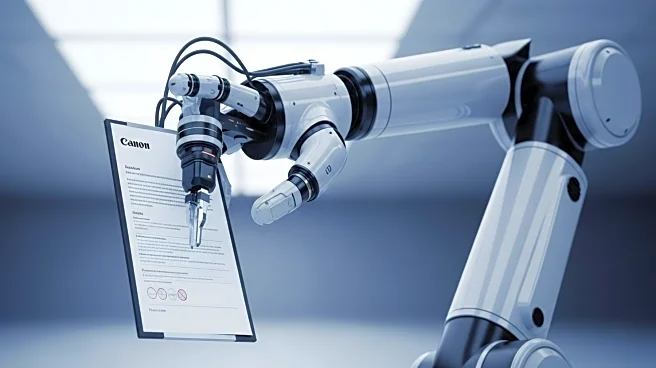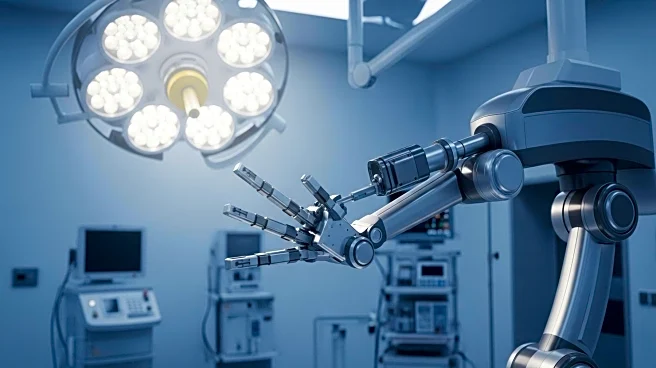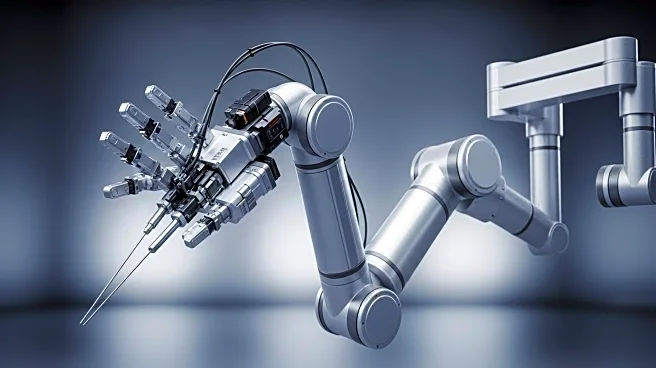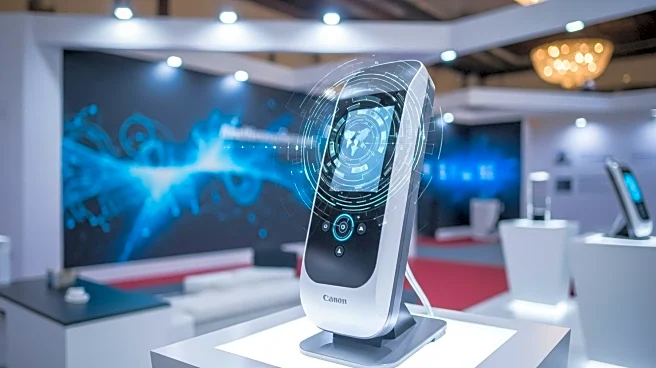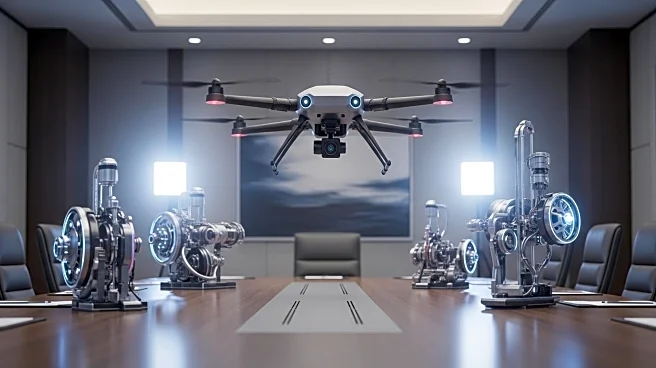What's Happening?
Microbot Medical Inc. has announced that it has received FDA 510(k) clearance for its LIBERTY Endovascular Robotic System. This clearance marks the first approval for a single-use, remotely operated robotic system designed for peripheral endovascular procedures. The company plans to commercialize the LIBERTY system in the U.S., aiming to transform the field by providing access to advanced robotics without the need for traditional capital equipment and infrastructure. The LIBERTY pivotal study demonstrated 100% success in robotic navigation to target and zero device-related adverse events, along with a significant reduction in radiation exposure for physicians. Microbot Medical is preparing for commercialization during the fourth quarter of 2025, targeting approximately 2.5 million peripheral endovascular procedures annually in the U.S.
Why It's Important?
The FDA clearance for Microbot Medical's LIBERTY system is a significant milestone in the field of endovascular robotics, potentially revolutionizing how procedures are conducted. By offering a single-use, remotely operated system, the company aims to enhance procedure efficiency, reduce costs, and improve the quality of care. This development could lead to broader accessibility to advanced robotic technologies, addressing critical unmet needs in healthcare. The reduction in radiation exposure and improved ergonomics for healthcare providers are notable benefits that could influence the adoption of robotic systems in medical practices. The commercialization of LIBERTY may also stimulate growth in the medical robotics industry, impacting healthcare delivery and economic stakeholders.
What's Next?
Microbot Medical is set to attend the H.C. Wainwright Annual Investor Conference, where CEO Harel Gadot will present the company's plans for commercialization. The company will continue collecting clinical data during the commercial launch to further validate the system's benefits. As Microbot Medical prepares to penetrate the U.S. market, it may also pursue entry into global markets, expanding the reach of its innovative technology. Stakeholders, including healthcare providers and investors, will likely monitor the system's performance and adoption rates closely, as these factors will influence future developments and potential expansions.
